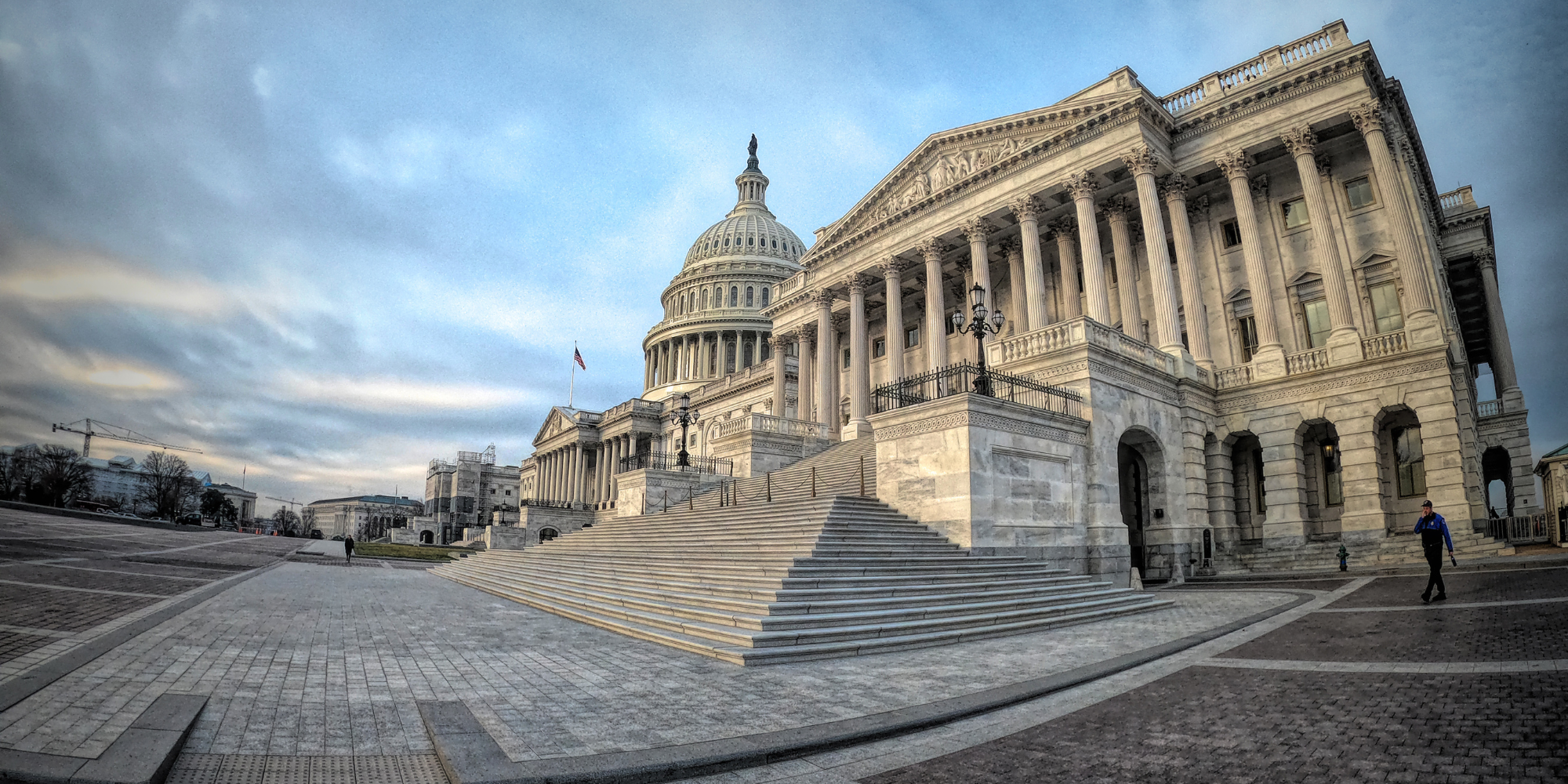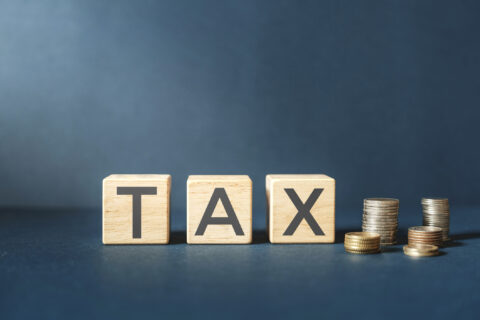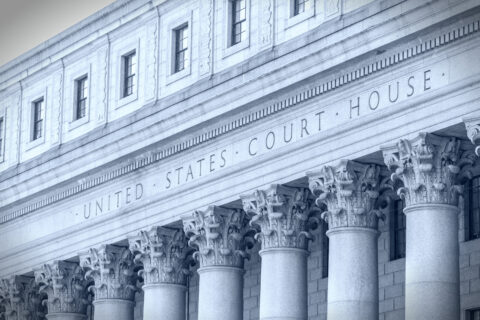On Sunday, the Senate passed the Inflation Reduction Act (H.R. 5376) via the reconciliation process by a vote of 51-50. This action came after a surprise agreement last month between Sen. Joe Manchin (D-WV) and Majority Leader Chuck Schumer (D-NY) on climate and clean energy provisions – many of which are included in last year’s House-passed Build Back Better Act, which Sen. Manchin previously rejected. It now goes to the House for consideration.
The bill reflects the urgent need for climate action across all levels of government. Local leaders see the impacts of climate change every day in their communities – from extreme heat, flooding, drought, wildfires and more. Local leaders need a federal partner, and Congressional action is the surest and most durable path toward reaching clean energy goals in light of the U.S. Supreme Court decision that limited the U.S. Environmental Protection Agency’s ability to regulate greenhouse gas emissions from power plants by curtailing its long-standing authority under the Clean Air Act.
The climate and clean energy provisions in the Inflation Reduction Act, which NLC supports, complement the funding and investments in climate change and community resilience provided under the Bipartisan Infrastructure Law (BIL). Equity and sustainability are common themes in BIL, and as we saw from NLC’s State of the Cities report, local leaders are committed to rebuilding their communities with these goals in mind. Under BIL, an overarching goal is to strengthen infrastructure and reduce greenhouse gas emissions to address climate change. BIL makes this a priority across all federal agencies and programs.
The climate and clean energy provisions in the budget reconciliation bill build on the BIL programs by providing $369 billion in tax credits and additional funding for zero-emissions vehicles and technologies, building efficiency and resilience, home energy efficiency and appliance electrification rebates, and reducing air pollution and greenhouse gas emissions overall, with many programs targeting low-income and disadvantaged communities.
Here are key programs for local governments to advance climate and clean energy goals and support community resilience in the Inflation Reduction Act.
Improving Building Stock through Energy Efficiency and Zero-Emission Electricity Generation
- $1 billion to update to the latest building energy code and zero energy/stretch codes.
- $4.3 billion for home energy performance-based, whole-house rebates through a new Home Owner Managing Energy Savings (HOMES) program.
- $4.275 billion for a high-efficiency electric home rebate program.
- $1 billion for improving energy efficiency, water efficiency or climate resilience of affordable housing.
- $87 million for a Low Emissions Electricity Program, including $17 million for consumer-related education and partnerships; $17 million for education, technical assistance and partnerships within low-income and disadvantaged communities; and $17 million for outreach and technical assistance for states and local governments.
Reducing Emissions in the Transportation Sector
- $400 million to replace heavy-duty vehicles with zero-emission vehicles.
- $60 million for grants, rebates and loans to identify and reduce diesel emissions resulting from goods movement facilities and vehicles servicing goods movement facilities in low-income and disadvantaged communities.
- $3 billion for loans to build new clean vehicle manufacturing facilities and $2 billion in grants to retool existing auto manufacturing facilities to manufacture clean vehicles.
- $3 billion for Neighborhood Access and Equity Grants to reconnect communities divided by existing infrastructure barriers, mitigate negative impacts of transportation facilities or construction projects on disadvantaged or underserved communities, and support equitable transportation planning and community engagement activities.
Reducing Greenhouse Gas Emissions and Improving Air Quality
- $27 billion for a Greenhouse Gas Reduction Fund to support the rapid deployment of low- and zero-emission technologies, with 40 percent for low-income and disadvantaged communities.
- $3 billion for Environmental and Climate Justice Block Grants for community led projects in disadvantaged communities and community capacity building centers to address disproportionate environmental and public health harms related to pollution and climate change.
- $315 million to reduce air pollution under the Clean Air Act, including for air quality monitoring grants and adopting and implementing greenhouse gas and zero-emission standards for mobile sources.
- $750 million for rebates and grants to improve the air quality of ports located in nonattainment areas.
- $50 million for technical assistance and grants to monitor and reduce air pollution and greenhouse gas emissions at schools in low-income and disadvantaged communities.
- $5 billion for Climate Pollution Reduction Grants ($250 million for planning and $4.75 billion for implementation).
Natural Resources, Agriculture and Community Resilience
- $5 billion in grants to support healthy, fire resilient forests, forest conservation and urban tree planting.
- $2.6 billion in grants to conserve and restore coastal habitats and protect communities that depend on those habitats.
- $6.75 billion for the Regional Conservation Partnership Program, which supports voluntary agricultural conservation activities.
- $121 million for the Fish and Wildlife Service to address climate-induced weather events, including addressing the threat of invasive species.
- $1.8 billion for hazardous fuels reduction projects on National Forest System land within the wildland-urban interface.
- $4 billion for drought mitigation, with priority given to the Colorado River Basin.
Clean Energy Tax Credits
The bill provides new incentives for private industry to produce more renewable energy and other incentives for individuals and households to transform their energy use and consumption.
- 10 years of consumer tax credits to make homes energy efficient and run on clean energy, making heat pumps, rooftop solar, electric HVAC and water heaters more affordable.
- $4,000 consumer tax credit for lower- and middle-income individuals to buy used clean vehicles, and up to $7,500 tax credit to buy new clean vehicles.
- Production tax credits to accelerate U.S. manufacturing of solar panels, wind turbines, batteries, and critical minerals processing.
- $10 billion investment tax credit to build clean technology manufacturing facilities, like facilities that make electric vehicles, wind turbines and solar panels.
- Tax credits for clean sources of electricity and energy storage.
- Tax credits for clean fuels and clean commercial vehicles to reduce emissions from the transportation sector.
- Tax credits to reduce emissions from industrial manufacturing processes.
- Tax credits to support the domestic production of biofuels.
This bill represents both the largest single investment in climate action in U.S. history and not nearly enough given the scale of the climate crisis. NLC has long called for a federal partner to address climate action and a national framework for reducing greenhouse gas emissions across sectors.
Specifically, NLC policy supports creating a national portfolio standard that increases the use of carbon neutral energy and promotes energy efficiency, with the goal of 50 percent carbon neutral energy by 2030 and 100 percent by 2050. These are also the international goals set forth in the Paris Climate Agreement, which the U.S. is a party to. It is estimated that the Inflation Reduction Act will reduce emissions by 40 percent by 2030. The bill makes progress on meeting national climate goals, though more work remains.
Next Steps
With Senate passage, Speaker Pelosi is expected to call the House back from August recess to vote on the bill, as early as later this week. Unfortunately, the House-passed version from last year includes several NLC priorities that are not included in the Inflation Reduction Act, namely parks funding through the Outdoor Recreation and Legacy Partnership program, climate workforce funding through the Department of Labor and the Corporation for National and Community Service, and funding for water infrastructure grant programs. NLC continues to advocate for these priorities, particularly workforce development and training programs to meet employer demand and the many new jobs that will be created through Bipartisan Infrastructure Law investments.
Additionally, part of the agreement between Sen. Manchin and Majority Leader Schumer includes bringing up for consideration a separate bill on federal permitting reform later this year, potentially tied to a continuing resolution to fund the federal government into FY23, which starts on Oct. 1. Among the key provisions, the proposal would set maximum timelines for permitting reviews, including two years for NEPA reviews for major projects and one year for lower-impact projects. NLC policy supports improving the NEPA process by reducing unnecessary project delays and decision time, among others. NLC will continue to monitor and analyze the permitting reform proposal.
Upcoming Event
Join NLC and the U.S. Department of Energy (DOE) Sep 15th, 2022, 3:00pm – 4:00pm ET to learn how your community can access and best use funding through the Infrastructure Investment and Jobs Act (IIJA), also known as the Bipartisan Infrastructure Law (BIL), with a special focus on small- and mid-sized cities.









